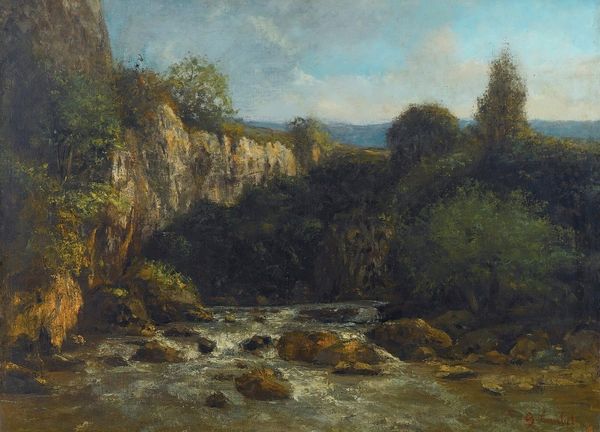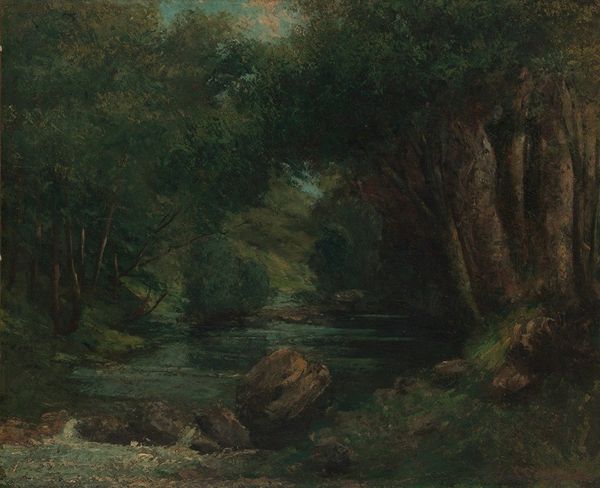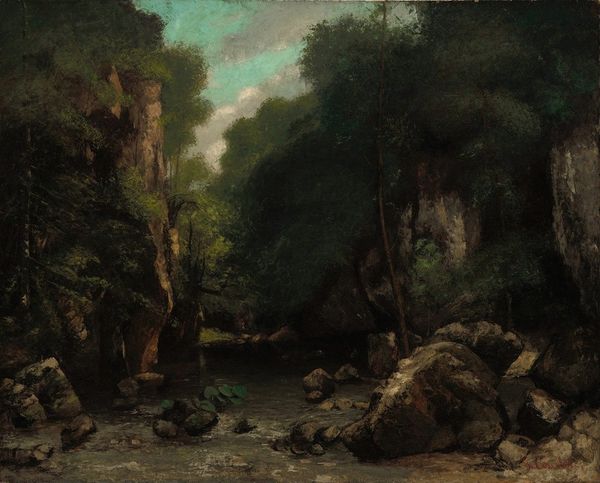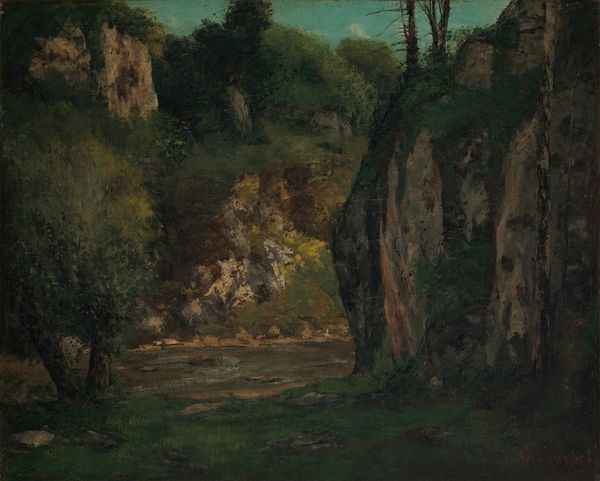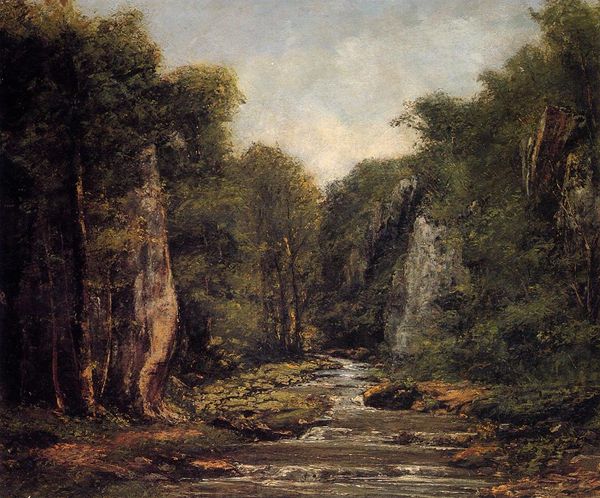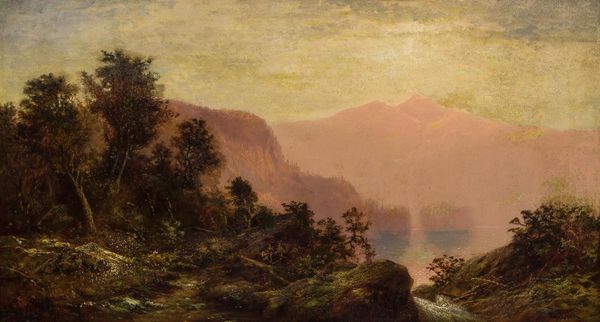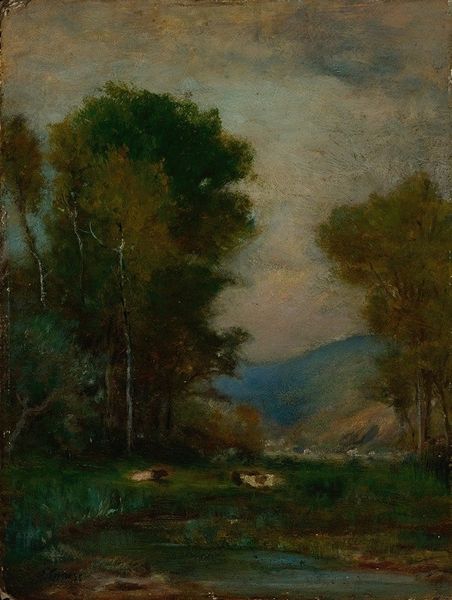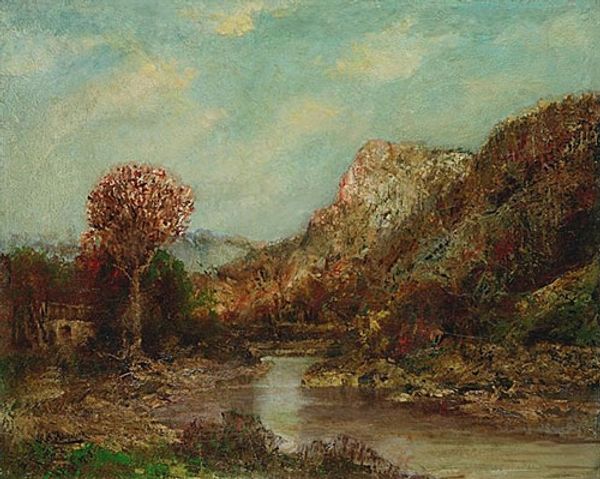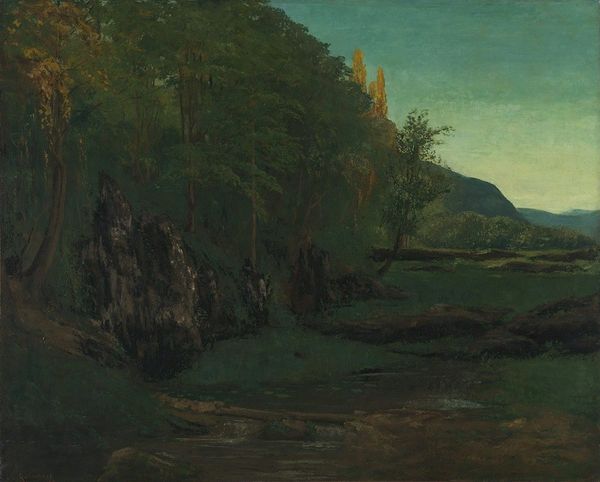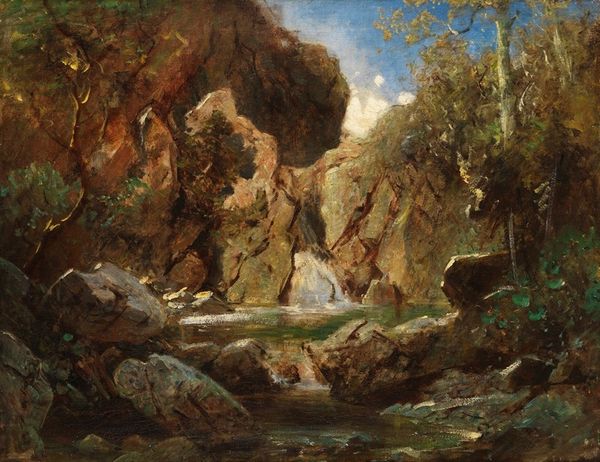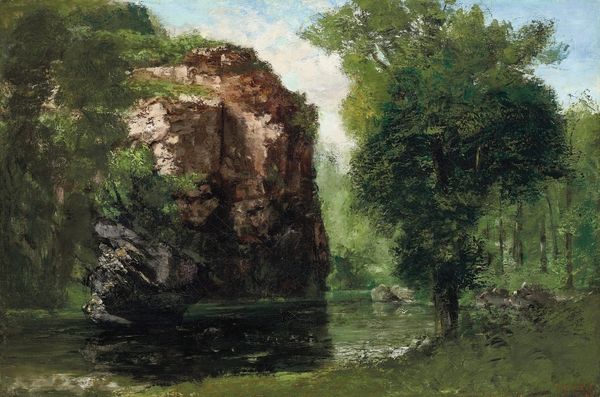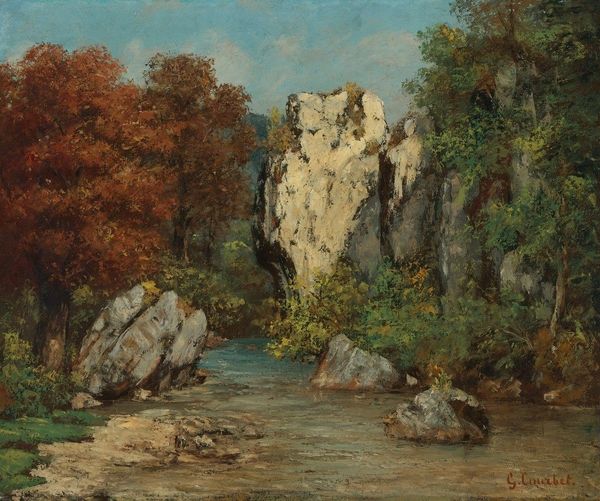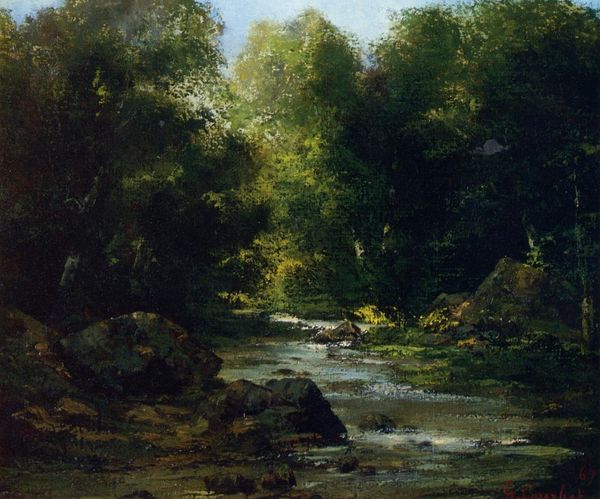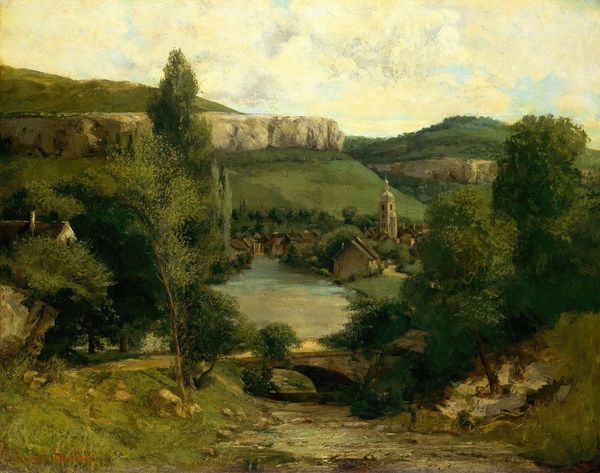
Copyright: Public Domain: Artvee
Editor: This is Gustave Courbet's "In the Swiss Alps," an oil painting from 1875. The sunlight dappling through the trees gives the scene such a serene quality. How do you interpret this work? Curator: Beyond the immediate beauty, consider Courbet's position as a politically engaged artist. Painted after his imprisonment for involvement in the Paris Commune, this landscape offers a fascinating lens. The 'Swiss Alps' weren't simply a pretty view; they represented exile. Editor: Exile? That shifts everything. So, the serenity I initially perceived might be tinged with…loss? Curator: Exactly. It speaks to themes of displacement and resilience, doesn't it? Can you see now, how even what might appear to be a straightforward landscape carries layers of socio-political commentary? Courbet's forced removal is manifest here, the painting is more than just geographic – what power does it hold? Editor: I see what you mean! It’s no longer just a peaceful landscape but a reflection on freedom and constraint, with this Swiss landscape holding deep social significance. The play of light and shadow becomes a representation of inner turmoil. How much of art from this period was rooted in social activism? Curator: The 19th century was a crucible. Many artists saw their work as inseparable from social justice, challenging power structures and advocating for change through their art. In Courbet's landscapes in particular, the turn to the land is a statement in and of itself. Editor: That really reframes how I view not just Courbet, but landscape painting generally. Thanks! Curator: My pleasure. Hopefully you recognize that, like landscapes, historical and social factors can sometimes be deceptively tranquil until properly interrogated!
Comments
No comments
Be the first to comment and join the conversation on the ultimate creative platform.
